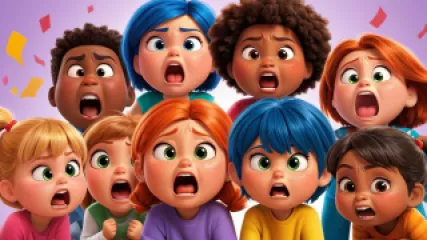Exploring Anger Management for Kids Through a Popular Children's Movie
Introduction:
Childhood is a critical time for emotional development, and learning how to manage anger is an essential skill that can benefit children throughout their lives. While traditional methods of anger management for kids often involve therapy sessions and counseling, there are alternative approaches that can provide valuable lessons in a fun and engaging way. One such approach is exploring the theme of anger management in popular children's movies. By analyzing characters and their journeys, children can learn valuable lessons about controlling their anger and finding healthier ways to express their emotions. In this article, we will delve into the world of anger management for kids through a popular children's movie, uncovering valuable insights and actionable strategies.
The Power of Storytelling
Children are naturally drawn to stories as they provide a powerful medium for learning and understanding complex emotions. Movies, in particular, have the ability to captivate young minds and create lasting impressions. By using a popular children's movie as a tool for teaching anger management, we can tap into the power of storytelling to make the learning process more enjoyable and relatable for kids.
Exploring Anger Management Through [Movie Title]
[Movie Title] is a beloved children's movie that has captured the hearts of both kids and adults alike. The film tells the story of [brief movie synopsis]. While the primary focus of the movie may not be anger management, there are valuable lessons embedded within the storyline that can help children understand and navigate their own anger.
1. Identifying Triggers
In the movie, we see how the main character, [Character Name], experiences anger in response to certain triggers. These triggers could be events, situations, or even specific individuals that provoke a strong emotional response. By observing how [Character Name] reacts to these triggers, children can begin to identify their own anger triggers in real life.
It is important to emphasize that anger triggers can vary from person to person, and what may provoke one child's anger may not affect another. Encourage children to reflect on their own experiences and identify situations or events that tend to trigger their anger.
2. Recognizing Physical and Emotional Cues
Anger is often accompanied by physical and emotional cues that indicate an escalation of emotions. In [Movie Title], we can observe how [Character Name] displays these cues when experiencing anger. These cues may include clenched fists, a red face, raised voice, or intense frustration.
Through analyzing the character's physical and emotional cues, children can learn to recognize these signs within themselves. By becoming aware of these cues, children can take proactive steps to manage their anger before it escalates.
3. Building Coping Mechanisms
As the movie progresses, we witness how [Character Name] learns to cope with anger in healthier ways. This journey provides an opportunity for children to explore different coping mechanisms and strategies that can help them manage their own anger.
Encourage children to brainstorm and discuss various techniques they can use when they feel angry. These techniques may include deep breathing exercises, counting to ten, taking a break, or engaging in a calming activity such as drawing or listening to music.
4. Expressing Anger Appropriately
One crucial aspect of anger management is learning how to express anger appropriately. In [Movie Title], we witness how [Character Name] initially struggles with expressing anger in a healthy manner but gradually learns to communicate their feelings effectively.
Children can be encouraged to explore different ways of expressing their anger without resorting to aggression or violence. This may involve teaching them how to use "I" statements to express their feelings, engaging in assertive communication, or seeking support from a trusted adult.
Interactive Activities for Anger Management
While watching a movie can be a valuable tool for teaching anger management, incorporating interactive activities can further enhance the learning experience for children. Here are a few activity ideas that can be done alongside or after watching [Movie Title]:
1. Character Reflection
Ask children to reflect on the main character's journey and write a short paragraph about what they have learned from observing their experiences with anger. Encourage them to draw parallels between the character's challenges and their own lives.
2. Role-Playing Scenarios
Create hypothetical situations where children can practice responding to anger triggers using the coping mechanisms they have learned. Role-playing allows them to apply their knowledge in a safe and supportive environment.
3. Artistic Expression
Provide art supplies and ask children to create a visual representation of their anger and how they can manage it effectively. This activity allows for creative expression and can serve as a reminder of the strategies they have learned.
4. Group Discussions
Facilitate group discussions where children can share their experiences, challenges, and successes in managing their anger. This fosters a sense of community and provides an opportunity for peer learning.
Conclusion
Exploring anger management for kids through a popular children's movie offers a unique and engaging approach to teaching this essential life skill. By analyzing characters, their journeys, and incorporating interactive activities, children can develop a deeper understanding of anger and learn effective strategies for managing it. Remember, while movies provide valuable insights, it is essential to supplement this learning with open conversations, guidance, and support from trusted adults. By empowering children with the tools to manage their anger, we can set them on a path towards emotional well-being and healthier relationships.






